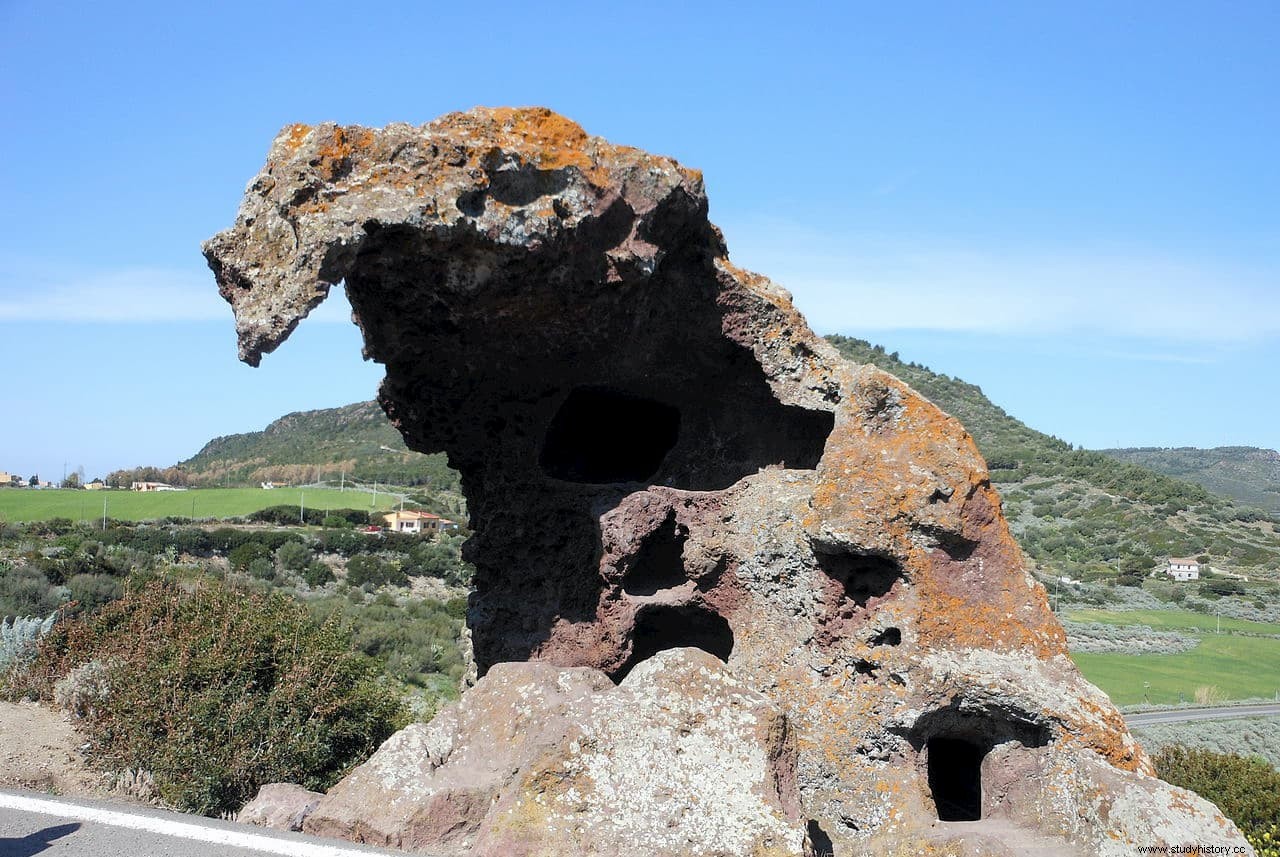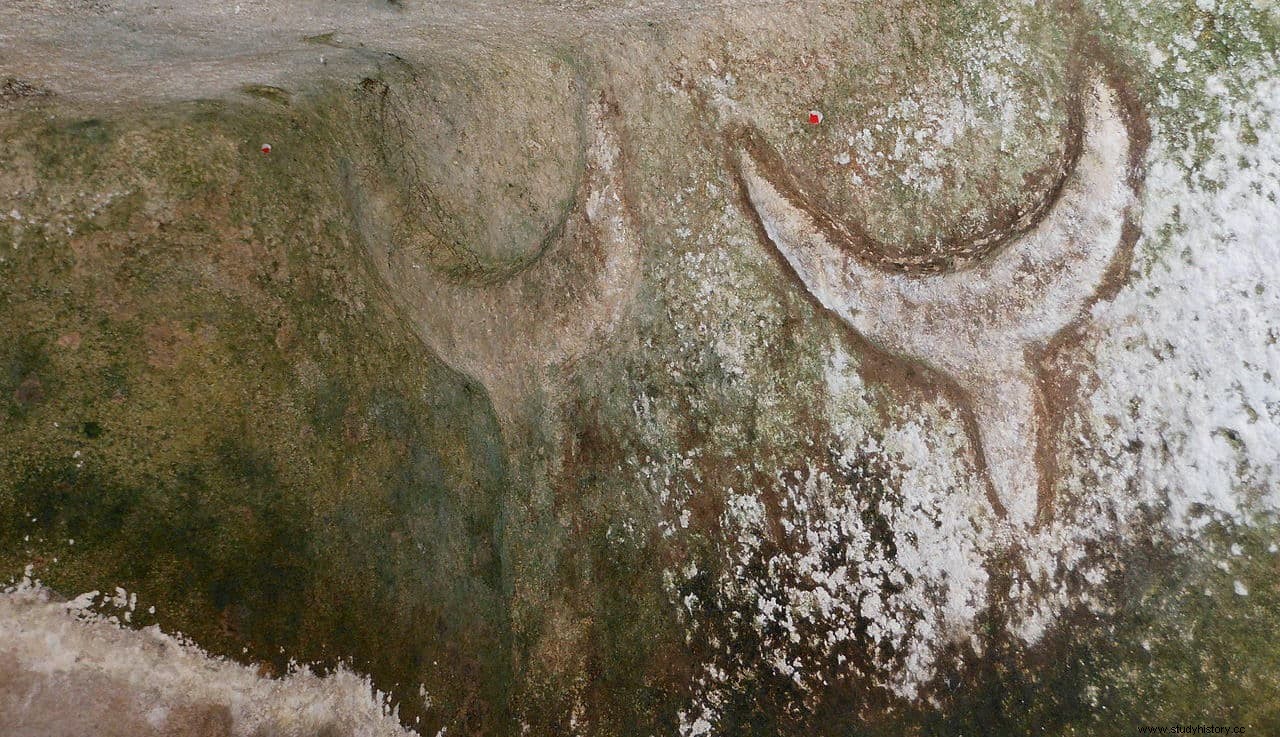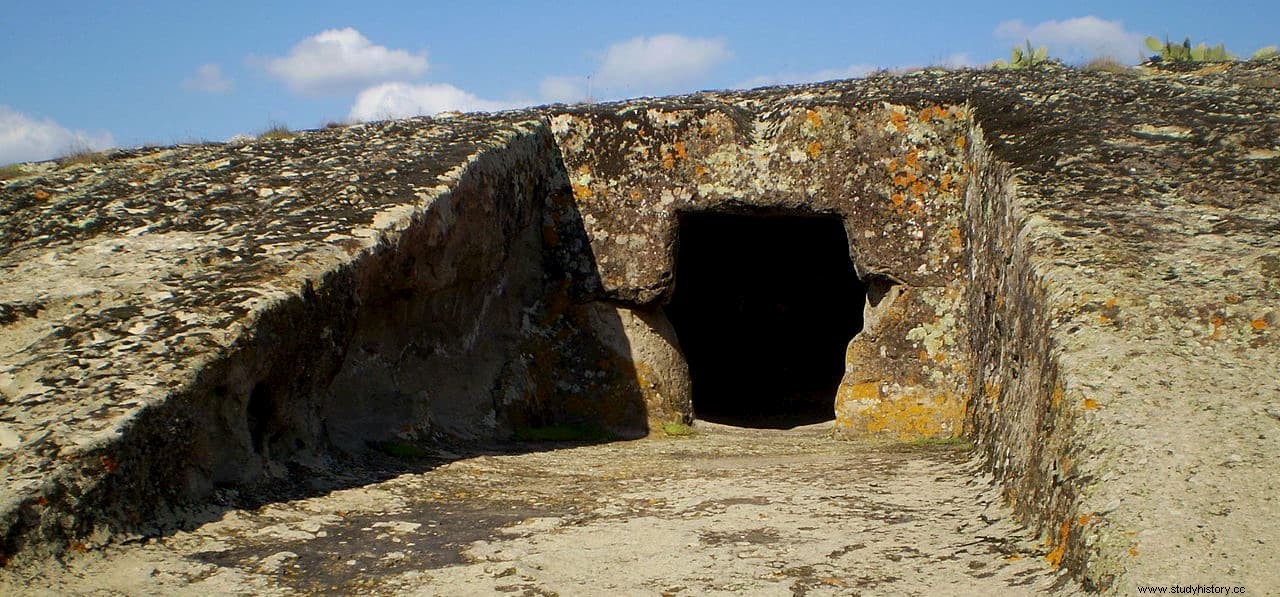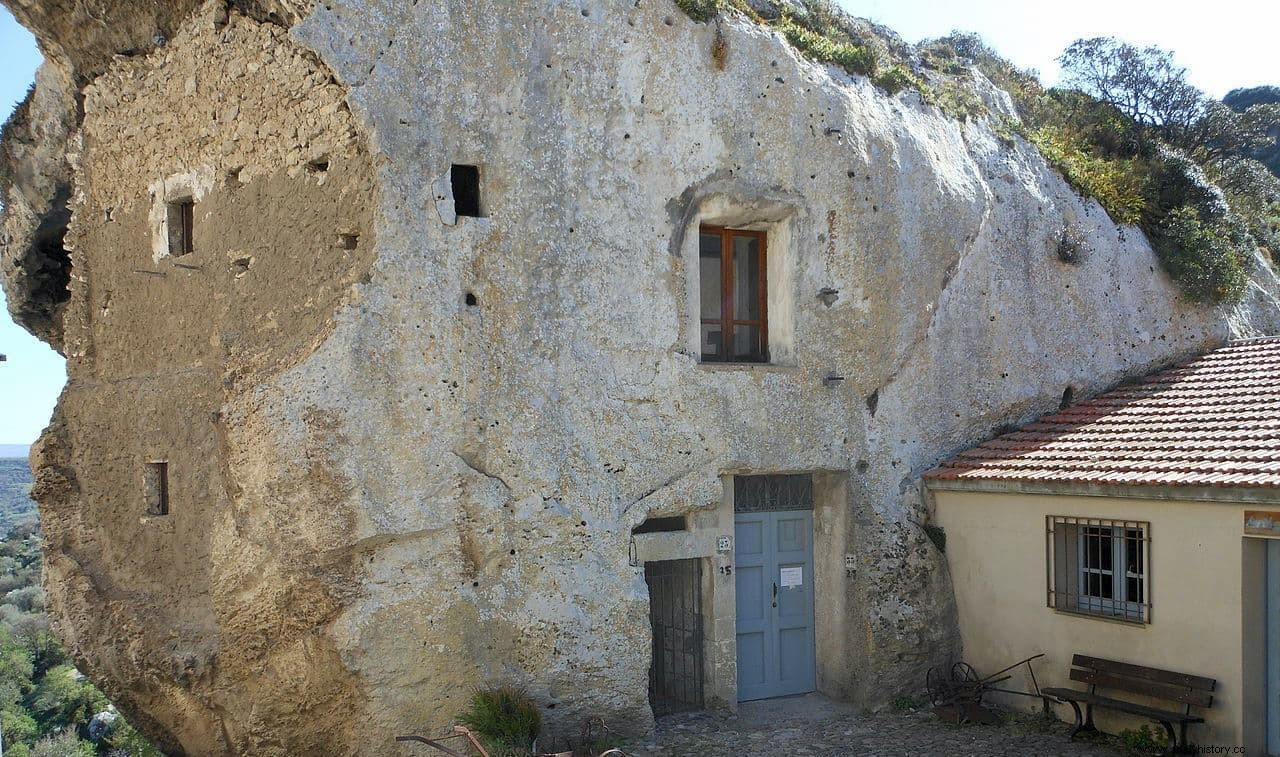Although they are found in various areas of the Mediterranean, the Domus de Janas they are especially abundant in Sardinia, where they were built by a prenuragic (i.e. pre-Bronze Age) culture called the Ozieri culture , which developed on the island between 3200 and 2800 BC
The main religious center of this Neolithic culture is the famous altar of Monte d'Accoddi, a kind of stepped pyramid a thousand years before the Egyptian ones, which was discovered in 1954 in the northwest of the island. It is considered the most unique cult monument of the early years of the western Mediterranean .
The Ozieri culture It was mainly dedicated to agriculture, and had a religion with many correspondences with that of the Cyclades islands, worshiping the Sun and the bull, as male symbols, and the Moon and the Mother Goddess, as female fertility symbols. Statuettes of the goddess have been found abundantly throughout Sardinia.

The Domus de Janas , Sardinian term meaning fairy houses or of witches (and which derives from Diana, the goddess of the hunt, just like the xanas Asturian women and the anjanas Cantabrian), are structures excavated in the living rock, in the form of a house that is accessed through a narrow entrance, and that served as tombs, generally excavated very close, forming authentic necropolises.
The objective was to imitate the houses of the living, but on a small scale, which also provides information on the construction of houses at the time.

In Sardinia, more than 2,400 of these constructions have been documented, built between 3400 and 2700 BC, which stand out compared to those of other places for the originality of their architecture and decoration. Many are hut-shaped with conical roofs, with an interior room decorated with magical symbols, bull horns, spirals, zigzags, and other geometric motifs embossed on doors and windows.
The walls were painted with red ochre, a pigment with which the bodies were also smeared before burial, and which were accompanied with jewelry, tools, obsidian arrowheads, stone axes, necklaces, bracelets, rings, food and others. objects, being finally deposited under shells of molluscs. Some researchers believe that the bodies were left in the open air, being brought indoors only once they had been reduced to bones.

The largest of all domus de janas found, located in the municipality of Sedini, today houses an ethnographic museum. Another, the so-called Capo's Tomba in Sant'Andrea Piru, it has 18 rooms and was transformed into a church during the Byzantine era. The largest concentration is in Anghelu Ruju, near the city of Alghero in the northwest of the island, where there is a group of 38 domus; and in Montessu, to the south, where there are more than 40 of different sizes and types.
In this last group, two structures stand out for their decoration. One of them shows a bull protome at the entrance to the chamber and the eyes and breasts of the mother goddess, as well as a false door that symbolizes the passage to the afterlife. The other presents horns of different shapes carved on the vault and the entrance step, alluding to the cult of the bull god.

Some domus de janas have subsequently been reused as housing, while others, due to their whimsical shapes, are today a unique tourist attraction, such as the so-called elephant rock .
The only exception, the only area where there is no domus de janas , is Gallura, just the northernmost region of Sardinia, because there the deceased used to be buried in megalithic circles instead of in fairy houses .
